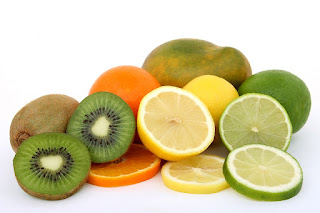Crafting a Nutritious Cookery Assignment: A Comprehensive Guide
In the realm of culinary education, assignments on nutrition serve as vital tools for students to grasp the significance of balanced eating habits and understand the role of ingredients in promoting health. Crafting an assignment on nutrition within the context of cookery not only demands a profound understanding of culinary principles but also requires a thorough comprehension of nutritional science. Whether you're a novice or an experienced cookery student seeking guidance on how to create a compelling assignment, this comprehensive guide will walk you through the essential steps.
Understanding the Objective
Before diving into the assignment, it's crucial to comprehend the core objective. Ask yourself: What specific aspect of nutrition do you aim to explore? Are you focusing on the nutritional value of ingredients, dietary restrictions, or meal planning for specific health condition
s? Clarifying the objective will streamline your research and guide your assignment's structure.
Research and Information Gathering:
Begin by conducting extensive research on the chosen topic. Utilize credible sources such as peer-reviewed journals, textbooks, and reputable websites to gather relevant information. Explore topics like macronutrients (carbohydrates, proteins, fats), micronutrients (vitamins, minerals), dietary guidelines, and the impact of cooking methods on nutritional content.
Structuring the Assignment:
A well-structured assignment enhances readability and coherence. Consider the following structure:
Introduction: Provide an overview of the assignment's objectives and the importance of nutrition in cookery.
Nutritional Analysis: Analyze the nutritional content of selected ingredients or recipes. Include information on calories, macronutrients, and micronutrients.
Dietary Considerations: Discuss dietary requirements for different age groups, lifestyles, and health conditions. Address common dietary restrictions such as allergies, intolerances, and cultural preferences.
Practical Application: Demonstrate how nutritional knowledge influences recipe development and meal planning. Offer practical tips for creating balanced and nutritious meals.
Conclusion: Summarize key findings and emphasize the significance of integrating nutrition into cookery practices.
Incorporating Practical Examples:
Enhance the assignment's effectiveness by incorporating practical examples and case studies. Share real-life scenarios where nutritional considerations play a crucial role in meal preparation. You can include examples of menu planning for specific dietary needs, such as vegetarian or gluten-free diets, to illustrate practical applications of nutrition in cookery.
Utilizing Visual Aids:Visual aids such as charts, graphs, and illustrations can enhance the presentation of nutritional information. Consider including visual representations of nutrient profiles, portion sizes, and meal plans to facilitate understanding and engagement.
Promoting Critical Thinking:
Encourage critical thinking and analysis by incorporating thought-provoking questions and prompts throughout the assignment. Encourage students to evaluate the nutritional value of popular recipes, assess the impact of ingredient substitutions on health outcomes, and propose innovative approaches to address dietary challenges.
Emphasizing Communication Skills:
Effective communication is essential in conveying nutritional information accurately. Encourage students to articulate their findings clearly and concisely, utilizing appropriate terminology and referencing credible sources. Incorporate opportunities for peer review and feedback to enhance communication skills and foster collaborative learning.
Ensuring Accuracy and Integrity:
Prioritize accuracy and integrity when presenting nutritional information. Double-check facts and figures to ensure they align with current dietary guidelines and scientific evidence. Encourage students to critically evaluate sources and discern between reliable information and misinformation in the realm of nutrition.
Encouraging Creativity and Innovation:
Foster creativity and innovation by allowing students to explore unconventional approaches to nutrition in cookery. Encourage experimentation with alternative ingredients, cooking methods, and flavor profiles to promote culinary diversity while maintaining nutritional integrity.
Evaluation and Feedback:
Develop clear evaluation criteria to assess students' understanding of nutrition concepts and their ability to apply them in cookery assignments. Provide constructive feedback to guide students in refining their assignments and improving their nutritional literacy.
In conclusion, crafting a Cookery Assignment Help on nutrition in cookery requires a multifaceted approach that integrates culinary expertise with nutritional science. By following these steps and incorporating practical examples, visual aids, and critical thinking exercises, you can create a compelling assignment that enhances students' understanding of nutrition and its role in promoting health through cookery



Comments
Post a Comment